DeMatha flex
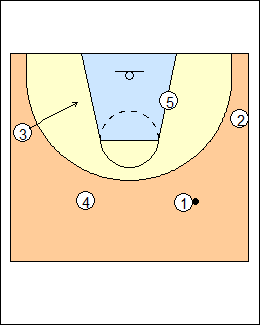 | 1 Mike Jones 1 plays close to the lane-line extended, off the sideline, it's the same for 4, who is in the scoring area. 5 is above the block, 3 walks his man down. |
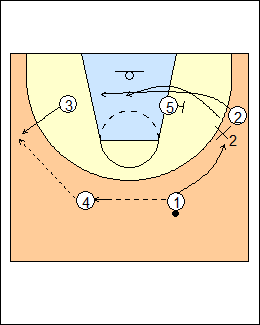 | 2 Flex screen any time the ball changes sides of the floor. 1 passes to 4, 5 sets a flex screen, 3 pops out to the wing, 1 vacates the top for spacing. Flex cutter 2 must go low, shoulder to shoulder (if 2 goes high there's not much room to set an upscreen), screener 5 makes sure that X2 does not go over the top, 2 will be open at least for a split second. 4 needs to be in the scoring area (e.g. one stride off the 3-point line), a spot where he is guarded, otherwise X4 can back up to help on a pass to the flex cutter. They don't want to hold the ball, 4 doesn't wait for the cutter, he swings the ball to 3, if he waits, 3 will have a difficult time getting open. Passes should snap around the perimeter (with traditional flex, the ball mostly stays on top). A pass from 3 to 2 is very easy compared with a pass from 4 to 2. See Offence - Nets (if 2 goes low and X2 stays attached, 5 ducks into the dots). |
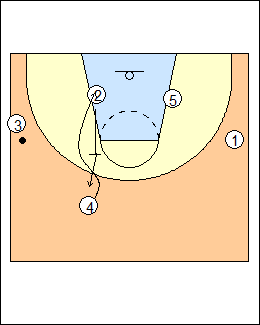 | 3 If you think you're open and don't get the ball, you're not open, don't stagnate the offence by begging for the ball, after a count of 1-1000, 2 sets a great upscreen for 4 then steps out. On the upscreen, 3 can rip through and attack baseline, usually for a one-dribble pull-up jump shot off the glass against defenders who can affect shots. 4 has to be patient, sets up his man and cuts over the screen to the block. If he is being denied at the top, just go straight to the basket, don't cut over. |
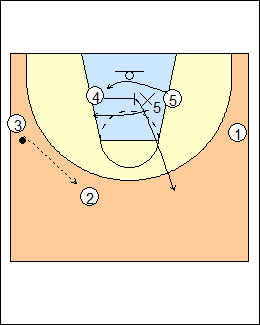 | 4 After 1-1000, 4 immediately sets a block-to-block screen for 5 (be physical, make contact on screens), and 3 probably throws the ball back to the top as soon as 4 leaves. 5 goes over or under the screen opposite his defender, and tries to post near the block area. As soon as 5 clears, 4 sprints out top. See Offence - Nets (Cross, Power), Fast breaks - North Carolina (regular secondary break). |
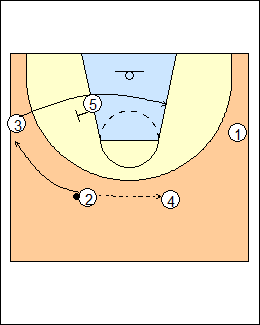 | 5 Continuity - flex screen on a pass from 2 to 4, 2 clears the top. 5 is always the flex screener, and 4 normally uses the upscreen then cross-screens for 5, but see denial counters below. Dematha does not use a wing-entry pass to get into flex, presumably because an upscreen would get 5 away from the basket. For a wing-entry option, see Offence - Flex variations Tubby Smith (don't bring 5 out on a pass to the wing, post him up, stagger screen for a shooter in the other corner, into flex). |
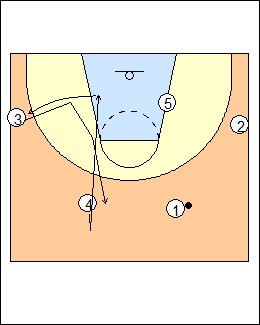 | 6 Denial options Also see Offence - DeMatha high motion. 1) Guard-to-guard Against flex, defending teams don't let the ball change sides of the floor. Dematha has four options. a) Backcut The easiest, 4 steps out like he wants the ball, cuts backdoor, stops at the block, 3 steps to the elbow and replaces 4, who replaces the wing. |
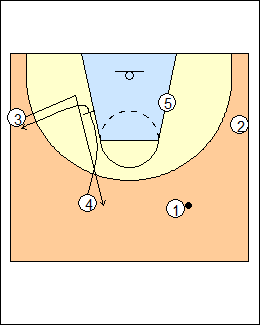 | 7 b) Pindown screen 3 is already anticipating, walks his man down, 4 sets a pindown, they replace each other. |
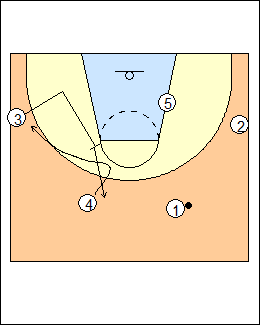 | 8 c) Flarescreen 3 flarescreens for 4 (near the elbow) then pops out, 4 may be open for a skip pass over the top. An effective backscreen is one of the best ways to get open. |
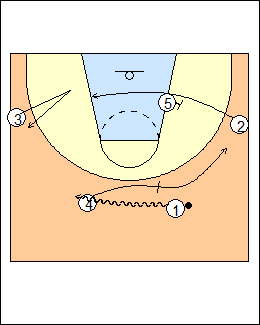 | 9 d) Screen on the ball 4 just goes to ballscreen. |
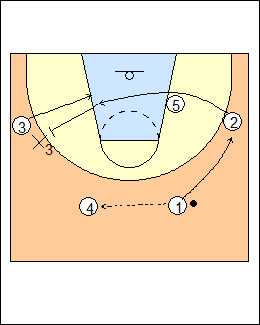 | 10 2) Wing denial 3 is denied after popping out, options are: a) Zipper 2 pauses, backscreens for 3, who backcuts, then 2 steps out (on a pass to 2, 3 would upscreen for 4). |
 | 11 b) Pindown 3 screens down for 2. On a pass to 2 on the wing, 3 would normally upscreen for 4, a block-to-block screen for 5 is another option. |
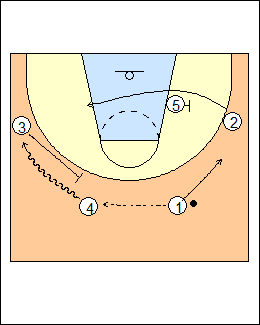 | 12 c) Ballscreen 3 ballscreens to get the ball to the wing (then 2 would upscreen for 3). |
 | 13 Sets They have a few sets that are opportunities for quick hitters, give a different look, and take them right into offence. To drill these sets, have the offence go upcourt 5 on 0, come back 5 on 5 against the defence, play to a stop or score, then the defence goes 5 on 0 upcourt and 5 on 5 back. a) Utah 2 pins down for 5, who goes to the corner for a pass, then 2 sets a diagonal screen for 4. 1 is ready to help 5 if anything goes wrong. You can run Utah after you get into flex, e.g., on the other side of the floor. |
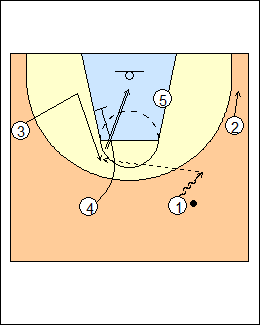 | 14 b) Elbow 1 pushes 2 down a bit, 3 cuts to the weakside block, 4 pins down for a shot at the elbow, get into flex if it's not there. You can run Elbow after getting into flex. |
 | 15 c) Post To post a perimeter player (here 3), 3 pins down on 2's flex cut, 4 passes to 2, who immediately throws it inside to 3. |
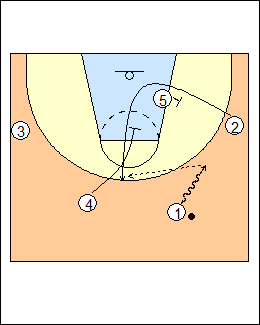 | 16 d) Shallow For 5. 2 uses a stagger screen by 5 and 4. Stanford - then 5 turns and screens for 4 going to the corner. |
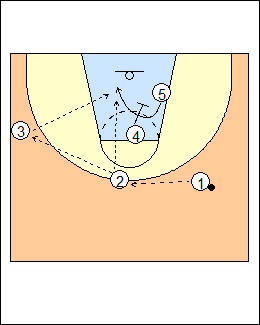 | 17 4 screens for 5, who can get a pass from 2 or 3. See Fast breaks - Larry Brown (Horns, Horns bump), 5-star pro-style (Ear), Argentina early offence, Spurs 2004/05 (option 4), Offence - Nets (Iso), Quick hitters - McKenzie clear, Oak Hill dribble, Staggered zipper.  |
This page was made with Basketball playbook from Jes-Soft